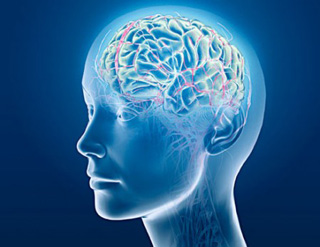 |
Tuesday, 29 May 2012
Surveillance cameras so strong they can read your text messages
Mood:
 irritated
Topic: Conspiracy / Corruption irritated
Topic: Conspiracy / Corruption

Surveillance cameras are now so powerful they are able to zoom in and read your text messages - leading to fears of further privacy intrusion by a 'Big Brother' style state. As well as being advanced enough to close in on an individual’s phone screen, security cameras will soon be able to pick up on raised voices and sniff out drugs too. The revelations were made at a privacy conference in Wellington, New Zealand, where it was also disclosed that the average person is digitally recorded about a dozen times a day. During last year’s Rugby World Cup in New Zealand CCTV cameras focused in on the crowd of thousands to read the text message someone was sending. As part of extensive police monitoring during the tournament, camera operators scanned the spectators looking for suspicious looking packages and aggressive behaviour. They then chose to zoom in on one man who was texting – although it turned out he was simply writing about the poor quality of the rugby match. Experts warned the fact that the cameras were able to do this raises concerns about breeches of individual’s privacy. Full story from dailymail.co.uk
Posted by Neil Bartlett DHyp M.A.E.P.H
at 01:01 MEST
Updated: Tuesday, 29 May 2012 01:51 MEST
Monday, 28 May 2012
Baking soda, cancer and fungus
Mood:
 a-ok
Topic: Cancer a-ok
Topic: Cancer

The cancer industry is closing in on baking soda and beginning to do research in earnest about sodium bicarbonate and how it is a primary tool in the treatment of fungus. Cancer is a fungus, can be caused by a fungus, or is accompanied by late-stage fungal infections, and now the Mayo Clinic confirms this. They are not the first to say so though. Many, even from the official world of orthodox oncology, recognize the similarities of cancer and fungal infections, the decay that ties these two together in a dance that all too often ends in miserable death. The Mayo Clinic is saying that a fungal infection of the gastrointestinal tract mimics cancer and inflammatory bowel disease. The invasive fungus, Basidiobolus ranarum, is typically found in the soil, decaying organic matter and the gastrointestinal tracts of fish, reptiles, amphibians, and bats. Patients with this fungal infection had non-specific symptoms such as abdominal pain or a mass that could be felt on examination. Before a conclusive diagnosis of the fungal infection was made, most patients were thought to have abdominal cancer, inflammatory bowel disease or diverticulitis. Surgical resection of the area of involvement and prolonged antifungal therapy successfully treated most patients. Interestingly, a few years ago researchers at Johns Hopkins were surprised that the drug itraconazole, commonly used to treat toenail fungus, can also block angiogenesis, the growth of new blood vessels commonly seen in cancers. Tumor angiogenesis is the proliferation of a network of blood vessels that penetrates into cancerous growths, supplying nutrients and oxygen and removing waste products. Cancer researchers studying the conditions necessary for cancer metastasis have discovered that angiogenesis is one of the critical events required for metasteses to occur. In mice induced to have excess blood vessel growth, treatment with itraconazole reduced blood vessel growth by 67% compared to placebo. "We were surprised, to say the least, that itraconazole popped up as a potential blocker of angiogenesis," says Dr. Jun O. Liu, professor of pharmacology. "We couldn't have predicted that an antifungal drug would have such a role." Itraconazole was found to reduce the numbers of circulating cancer cells, prevent the worsening of prostate cancers, and delay the need for chemotherapy. However, it has serious side effects when given in the necessary high dosages that include hypertension, low potassium levels and fluid retention. These side effects require treatment with other medications. Effects of high doses of itraconazole could lead to heart failure. For two decades John Hopkins has recognized the increasing frequency of severe fungal infections in patients with neoplastic diseases. Most fungal infections are caused by the commonly recognized opportunistic fungi Candida spp and Aspergillus spp, and the pathogenic fungi Cryptococcus neoformans, Histoplasma capsulatum, Coccidiodes immitis, and less often by Blastomyces dermatidis. However, recently newer pathogens such as Pheohyphomycetes, Hyalohyphomycetes, Zygomycetes and other fungi of emerging importance such as Torulopsis glabrata, Trichosporon beigelii, Malassezia spp, Saccharomyces spp, Hansenula spp, Rhodotorula spp, and Geotrichum candidum have appeared as significant causes of infection in this patient population. Dr. Tullio Simoncini does not say that cancer is caused by yeast; what he is telling the world is that the cancer is a yeast overgrowth. What causes the cancer (or a yeast-filled tumor) is another thing. Simoncini has always insisted that tumors are white because they are fungi. Some have made fun of him, but looking around at the extremely sparse information about the subject, I ran into one person saying: "If someone had asked me a year ago what color the inside of a tumor was, I would have guessed red and gray. When they did the biopsy, I asked to see the tissue specimens: five quarter-inch to half-inch strings of vermicelli (Italian for little worms) with little streakings of blood. They didn't look evil to me, just strings of fat. The entire mass was white inside as the pathology report stated. Specialists in throat and mouth cancer say that cancers can be red or white patches: any patch that appears randomly and is red or white in color could be a mouth cancer symptom. The white patches in the mouth are called leukoplakia and the red patches are called erythroplakia, which are pre-cancerous conditions. Though these red or white patches are not always cancerous, it could be the result of a fungal infection caused by Candida called thrush. Thrush will lead to a red patch that often bleeds after the white patch disappears. A small amount of this fungus lives in your mouth most of the time. It is usually kept in check by your immune system and other types of germs that also normally live in your mouth. However, when your immune system is weak, the fungus can grow. Fungal Mycotoxins It just so happens that a toxin produced by mold on nuts and grains can cause liver cancer, according to University of California Irvine Researchers. And a French case-control study of 1,010 breast cancer cases and 1,950 controls with nonmalignant diseases found that breast cancer was associated with increased frequency of mold-fermented cheese consumption. Fungi produce mycotoxins, which can kill us or cause cancer. Dr. Wang and Groopman from the Environmental Health Sciences Department at Johns Hopkins published on the effects of mold toxins on DNA in Mutation Research, a leading cancer journal. They said mycotoxins with carcinogenic potency include aflatoxins, sterigmatocystin, ochratoxin, fumonisins, zearalenone, and some Penicillium toxins. Most of these carcinogenic mycotoxins are genotoxic agents. Aflatoxin is a potent genotoxic agent, is mutagenic in many model systems and produces chromosomal aberrations, micronuclei, sister chromatid exchange, unscheduled DNA synthesis, and chromosomal strand breaks. Most strikingly, the relationship between aflatoxin exposure and development of human hepatocellular carcinoma (liver cancer) is demonstrated by studies. Harrison et al. (1993) examined human breast cancer tissue for evidence of the presence of aflatoxin. The researchers examined human DNA from a variety of tissues and organs to identify and quantify aflatoxin DNA-adducts. Such adducts are considered to be proof of the mycotoxin's presence in a particular tissue. Aflatoxins may in fact be a risk factor for cancer induction in a variety of organs in man, in the same manner as that of cigarette smoking. DNA from normal and tumorous tissue obtained from patients with cancer of the breast was examined. Tumor tissues had higher aflatoxin-adduct levels than did normal tissue from the same individual. The result of this study verifies the presence of carcinogenic aflatoxin within the cancer tissue and thus implicates aflatoxin as a cause of breast cancer. That is the same as saying cancer is a fungus or is caused by a fungus and this is what Dr. Simoncini has been saying all along. Intensive Care Units are particularly on alert with immunocompromised and oncology patients for fungal infections. "Patients with brain tumors used to have a life expectancy of 3-12 months, but better treatment has allowed them to live a bit longer," said Brenda Shelton, clinical nurse specialist at the Sidney Kimmel Comprehensive Cancer Center, Johns Hopkins University, Baltimore. "The last two brain tumor ICU patients we treated died of infection, not of their disease. One patient had a rare fungus, and the other had candidemia. Years ago, you would not see most of these fungal infections in patients with brain tumors because they would not live long enough." "The biggest misconception is the belief that fungal infections are rare," Shelton said. "Another misconception is fungal infections are like every other severe infection. They are harder to manage, harder to eradicate and more frequent than people realize." One of the most common complications involved in treating patients with hematologic cancer is fungal infections. Aspergillus niger fungal infection in human lungs produces large amounts of oxalic acid, which is extremely toxic to the blood vessels and which may cause fatal pulmonary hemorrhages. Consequently, oxalic acid (calcium oxalate crystals) in the sputum or lung specimens of patients is also an indication of an Aspergillus infection of the lung. These calcium oxalate crystals are the same as the calcium oxalate found in breast cancers. The presence of oxalates in the breast is indicative of the presence of fungi interwoven within the stages of breast cancer development. Since humans do not make oxalic acid themselves, this is an appropriate conclusion. Dr. Robert Young states, "Bacteria, yeast/fungi, and mold are not the cause of a cancerous condition but are the result and the evidence of cells and tissues biologically transforming from a healthy state and to an unhealthy state." Dr. Young astutely observed that, "over-acidification of the body leads to the development of chronic yeast and fungal infections and ultimately a cancerous condition of the cells and tissues." If one has cancer, chances are pretty good that one also has a fungal infection to one degree or another. According to The Home Medical Encyclopedia, in 1963 about one-half of all Americans suffered from an "unrecognized" systemic fungal condition. Far more Americans suffer from fungal infections today as antibiotics, hormone replacement therapies, and birth control pills continue to be consumed like candy. Thus more and more children are becoming infected with candidal meningitis or viral meningitis, which means their systems are suffering under the weight of fungi who put out an assortment of poisons - or mycotoxins. Sodium Bicarbonate is an Antifungal Agent The current controversy over sodium bicarbonate and its use in oncology might be relatively new but baking soda has a long history of helping people get through the worst medical conditions. The Eloquent Peasant, an Egyptian literary work dated around 2000 B.C., refers to a peddler selling natron, a natural blend of sodium bicarbonate, chloride and sodium carbonate used in mummification, just one of hundreds of uses this compound has been put to. Baking soda's first widespread use was probably as a leavening agent for bread and other baked goods. It has been used commercially since 1775, although the now-famous Arm & Hammer brand wasn't introduced until 1867. Sodium bicarbonate (Na2HCO3) is recognized by most as ordinary baking soda, which is found in deposits around the globe. Its backbone characteristic is to maintain balance of carbon dioxide, bicarbonate and pH. Sodium bicarbonate is available and sold in every supermarket and pharmacy in the world and is widely used in emergency rooms and intensive care wards in injectable forms but is sold as a common household substance that is used for hundreds of different things. Read my book, Sodium Bicarbonate, and see that something as inexpensive as baking soda will outperform the most expensive pharmaceuticals. Across a wide range of disorders, including cancer and diabetes, we find conclusive evidence and plenty of theoretical backing to suggest that sodium bicarbonate is a frontline universal medicine that should be employed by all practitioners of the healing and medical arts for a broad range of disorders that are afflicting contemporary man. For all the references, sources and more articles, please visit Dr. Mark Sircus blog. About the author: Mark A. Sircus, Ac., OMD, is director of the International Medical Veritas Association (IMVA) http://www.imva.info/. Article Source - naturalnews.com
Posted by Neil Bartlett DHyp M.A.E.P.H
at 01:01 MEST
Updated: Monday, 28 May 2012 02:12 MEST
Sunday, 27 May 2012
Experiment that proved psychic ability is real
Mood:
 bright
Topic: Psychic Research bright
Topic: Psychic Research

It was a miraculous experiment that appeared to prove that people do possess psychic ability. Memory tests carried out by Daryl Bem in 2010 'proved' that we have the ability to predict future by picking out certain words. But now other scientists have tried to replicate the results - and found nothing. The Cornell University academic published a paper which claimed subjects shown a list of words could better recall the ones that they would later be shown again - but before they actually knew which words made up the second list. The apparently rigorous exam seemed to prove that participants could see into the future, and 'pick out' the words that they would soon come across. The report was published in the Journal of Personality and Social Psychology, and sparked outrage among many psychologists, who could not believe the result. Full Story from dailymail.co.uk
Posted by Neil Bartlett DHyp M.A.E.P.H
at 01:01 MEST
Updated: Sunday, 27 May 2012 03:03 MEST
Saturday, 26 May 2012
Why the early bird doesn't catch the worm!
Mood:
 cheeky
Topic: Sleep cheeky
Topic: Sleep

It has long been accepted that the early bird catches the worm. But new research shows that early risers find their inspiration in the evening while night owls are at their creative best in the morning. The study is unlikely to be embraced by those who enjoy a morning lie-in nor those who get jump out of bed in order to get the creative juices flowing. Scientists measured the responses of both kinds of participants, the 'morning-type' and the 'evening-type' and found the reactions from both sets to certain problems contrasted with the popular beliefs. Full Story from dailymail.co.uk
Posted by Neil Bartlett DHyp M.A.E.P.H
at 01:01 MEST
Updated: Saturday, 26 May 2012 02:18 MEST
Friday, 25 May 2012
Parents Experience Greater Happiness, Psychologists Find
Mood:
 chatty
Topic: Hypnosis & Psychology chatty
Topic: Hypnosis & Psychology

Contrary to recent scholarship and popular belief, parents experience greater levels of happiness and meaning in life than people without children, according to researchers from the University of California, Riverside, the University of British Columbia and Stanford University. Parents also are happier during the day when they are caring for their children than during their other daily activities, the researchers found in a series of studies conducted in the United States and Canada. These findings appear in a paper -- "In Defense of Parenthood: Children Are Associated With More Joy Than Misery" -- which will be published in a forthcoming issue of Psychological Science, the flagship journal of the Association for Psychological Science. "We are not saying that parenting makes people happy, but that parenthood is associated with happiness and meaning," explained Sonja Lyubomirsky, professor of psychology at UC Riverside and a leading scholar in positive psychology. Full Story from sciencedaily.com
Posted by Neil Bartlett DHyp M.A.E.P.H
at 01:01 MEST
Updated: Friday, 25 May 2012 02:03 MEST
Thursday, 24 May 2012
A Cab Ride I'll Never Forget
Mood:
 happy
Topic: Inspirational happy
Topic: Inspirational

Twenty years ago, I drove a cab for a living. One night I took a fare at 2:30 AM, when I arrived to collect, the building was dark except for a single light in a ground floor window. Under these circumstances, many drivers would just honk once. But I had seen too many impoverished people who depended on taxis as their only means of transportation. Unless a situation smelled of danger, I always went to the door. This passenger might be someone who needs my assistance, I reasoned to myself. So I walked to the door and knocked. 'Just a minute', answered a frail, elderly voice. I could hear something being dragged across the floor. After a long pause, the door opened. A small woman in her 80's stood before me. She was wearing a print dress and a pillbox hat with a veil pinned on it, like somebody out of a 1940s movie. By her side was a small nylon suitcase The apartment looked as if no one had lived in it for years. All the furniture was covered with sheets. There were no clocks on the walls, no knick-knacks or utensils on the counters. In the corner was a cardboard box filled with photos and glassware. "Would you carry my bag out to the car?" she said. I took the suitcase to the cab, then returned to assist the woman. She took my arm and we walked slowly toward the curb. She kept thanking me for my kindness. "It's nothing", I told her. "I just try to treat my passengers the way I would want my mother treated." "Oh, you're such a good man," she said. When we got in the cab, she gave me an address, and then asked, "Could you drive through downtown?" "It's not the shortest way," I answered quickly. "Oh, I don't mind," she said "I'm in no hurry. I'm on my way to a hospice." I looked in the rear-view mirror. Her eyes were glistening. "I don't have any family left," she continued. "The doctor says I don't have very long." I quietly reached over and shut off the meter. "What route would you like me to take?" I asked. For the next two hours, we drove through the city. She showed me the building where she had once worked as an elevator operator. We drove through the neighborhood where she and her husband had lived when they were newlyweds. She had me pull up in front of a furniture warehouse that had once been a ballroom where she had gone dancing as a girl. Sometimes she'd ask me to slow in front of a particular building or corner and would sit staring into the darkness, saying nothing. As the first hint of sun was creasing the horizon, she suddenly said, "I'm tired. Let's go now." We drove in silence to the address she had given me. It was a low building, like a small convalescent home, with a driveway that passed under a portico. Two orderlies came out to the cab as soon as we pulled up. They were solicitous and intent, watching her every move. They must have been expecting her. I opened the trunk and took the small suitcase to the door. The woman was already seated in a wheelchair. "How much do I owe you?" she asked, reaching into her purse. "Nothing," I said. "You have to make a living," she answered. "Oh, there are other passengers," I responded. Almost without thinking, I bent and gave her a hug. She held onto me tightly. Our hug ended with her remark, "You gave an old woman a little moment of joy." After a slight pause, she added, "Thank you." I squeezed her hand, and then walked into the dim morning light. Behind me, a door shut. It was the sound of the closing of a life. I didn't pick up any more passengers that shift. I drove aimlessly lost in thought. For the rest of that day, I could hardly talk. What if that woman had gotten an angry driver, or one who was impatient to end his shift? What if I had refused to take the run, or had honked once, then driven away? On a quick review, I don't think that I have done anything more important in my life. We're conditioned to think that our lives revolve around great moments. But great moments often catch us unaware, beautifully wrapped in what others may consider a small one. Article Source - helpothers.org
Posted by Neil Bartlett DHyp M.A.E.P.H
at 01:01 MEST
Updated: Thursday, 24 May 2012 02:01 MEST
Wednesday, 23 May 2012
Don't look back in anger!
Mood:
 a-ok
Topic: Health a-ok
Topic: Health

Dwelling on the past may not only stop you from enjoying each day to the full – it could also be bad for your health. Research suggests that people who look back at their past experiences full of regrets about missed opportunities or with bitterness about how they have been treated are more likely to fall ill and generally have a poorer quality of life. Those who look back in anger are also more sensitive to pain, it found. It also suggested that focusing too much on the future does not harm health – but can stop people enjoying what they have. The happiest and healthiest people, according to the researchers, are those who manage to enjoy the here and now, while making time to learn from the past and plan for the future. Full story from dailymail.co.uk
Posted by Neil Bartlett DHyp M.A.E.P.H
at 01:01 MEST
Updated: Wednesday, 23 May 2012 09:52 MEST
Tuesday, 22 May 2012
Emotional cleanse for stress reduction
Mood:
 chatty
Topic: Alternative Health chatty
Topic: Alternative Health

Every bit as important as physical detoxification, an emotional cleanse will free your mind and body in ways you can't imagine prior to doing it. It isn't always easy, but I have never met anyone who followed the protocol and regretted doing it. Beyond the immediate personal benefits, emotional cleansing may prevent the onset of disease, as there are scientific links between chronic emotional angst or stress and the major diseases of today. One Harvard study of 1,305 men with an average age of 62 revealed that the angriest men were three times more likely to develop heart disease than the most placid ones. According to researchers at UCLA's Jonsson Comprehensive Cancer Center, stress acts as a sort of fertilizer that significantly accelerates the spread and progression of breast cancer in animals. Immune cells, which normally protect the body against disease, are being biologically reprogrammed through stress into cells that actually help cancers grow and metastasize. In a review of the scientific literature on the relationship between stress and disease, Carnegie Mellon University psychologist Sheldon Cohen has found that stress is a contributing factor in human disease, and in particular depression, cardiovascular disease and HIV/AIDS. No doubt about it, chronic emotional stress contributes to fatal disease. Don't allow it! Like a dietary cleanse, the emotional cleanse allows the emotional body to reset itself, letting go of the cumbersome toxic load and reducing stress significantly. Unless you consciously and deliberately engage in the emotional cleansing process, you are leaving your future health to chance. Don't leave your health to chance. Follow the recipe. Besides, it is the right thing to do. Recipe for an emotional cleanse The recipe will call to mind specific people and events and ask you to take certain actions, always erring on the mature expression of your emotions, rather than an immature expression. 1. Cleanse anger Identify the people at whom you are angry. Once identified, the recipe calls for you to write down the mature expression of your issue (not the immature one). Once you are clear on your adult position on the issue, the road forward will be obvious. 2. Cleanse guilt Identify people you have wronged and of whom you need to ask forgiveness. Identify specifically what you did or how you acted poorly toward each person and what, if any, restitution you feel is appropriate. Make plans to act on your insights. 3. Cleanse negative memories you are holding onto Write a list of negative memories that still bother you. Once you have your list, review each memory completely and from a distance. Imagine you are viewing the memory as a neutral observer from a safe and comfortable distance. Ask yourself what there is to learn from each memory. Record your thoughts. 4. Cleanse self-criticism Notice the specific words you use to criticize yourself. Take a paper and pencil and write the words self-criticism at the top. Then, write down all the phrases the come to mind that you use to beat yourself up. Don't censor yourself. Review each phrase, curious about its origins. Next, completely clear your mind by listening passively but intently to some mundane sound in your immediate environment (the sound of a refrigerator motor, a fan, the hum of your computer of the distant traffic). Once you are settled and clear, throw the paper away. 5. Develop resources Finally, immerse yourself in a positive memory, seeing what you saw at the time, hearing what you heard and feeling what you felt. Imagine many, many more of these positive memories being scattered into your future. By ending on a positive note and casting positivity into your future, you set the stage for good things to come. Positive expectations and optimism are linked to health and longevity. The moral of the story: Take charge of your emotional health. Consciously process your emotions. Don't allow stress to dictate your state of being. When this happens, your mind and body become a habitat in which disease is more likely to flourish. This is a proven fact. If you cannot complete the emotional cleanse on your own, get some help and support in the process. It is that important. Article Source - naturalnews.com
Posted by Neil Bartlett DHyp M.A.E.P.H
at 01:01 MEST
Updated: Tuesday, 22 May 2012 02:13 MEST
Monday, 21 May 2012
Neuroplasticity, Changing our Belief about Change
Mood:
 a-ok
Topic: Hypnosis & Psychology a-ok
Topic: Hypnosis & Psychology

A dangerous belief in our culture is that we can't change. We’ve all heard the disempowered statements: “He’s just grumpy. He can’t change that.” or “I will always be anxious. It's the way I was born.” While we most certainly have genetic predispositions, the brains of individuals’ young and old can change in amazing ways. Neuroplasticity is a fancy way of saying that our brains can change. We are not victims of our neurons or genes. We are empowered creators of our mental states. The erroneous belief that we are "set in stone" can stop people from trying to change and take away their responsibility. In the same way that germ theory altered the way we look at sanitation and hygiene, I think that spreading the knowledge about our brain’s ability to change can alter the way our culture approaches emotions, attitudes, and values. Our brains can change. Our brains are made up of billions of neurons. Neurons connect to one another, forming pathways that relay information. We learn things by forming neural connections in response to associations in our everyday experiences. In learning to drive a car, we experience the connection between red traffic lights and pressing the brake. We form a neural pathway for this association. Each time we brake at a red light, we reinforce and strengthen the neural pathway. As the saying goes, "Neurons that fire together, wire together." The more we practice something, the more we strengthen the pathway, and the easier the skill becomes. Our behavioral response can become almost automatic. Our brain can also prune old neural pathways to quiet or unlearn associations. For example, after you move to a different home, you learn the directions to your new place and stop practicing your old path. But in those first few weeks after a move, have you ever found yourself engrossed in another thought and accidentally pulling into the driveway of your old home because your automatic pathway took over? Luckily, by refraining from the old directions and practicing the new way home, you strengthen a new neural pathway and the old neural pathway weakens. It's a good thing our brains can change, or we would still be pulling up to our childhood home. Similar to physical skills like driving, the brain also forms neural pathways in learning and practicing emotional skills. Your emotional responses to experiences in your world are the result of well-worn neural pathways that developed over your lifetime. While our genes influence our temperament, research has demonstrated that our environment and our own mind can physically alter our brains and thus our emotional responses. This means that emotions that we want more of in our life and our world, like happiness, patience, tolerance, compassion, and kindness, can be practiced and learned as skills. Other emotions, like anxiety, stress, fear, or anger, can be dampened. Keeping in the car motif, let’s talk about an emotional association: traffic and anger. When we get stuck in traffic, an automatic response can be anger or frustration. But, by feeling angry every time we are in traffic, we are strengthening that neural pathway and cementing that emotional response. When there is nothing we can do in that moment but accept the traffic, wouldn’t it be great to feel positive emotions instead? We can just observe the negative emotion that we are feeling and try practicing a different emotional response. We can start linking traffic with stillness and peace. This would be difficult at first because we want to let the well-developed neural pathway leading to anger fire, but by inhibiting that pathway, we help unwire those connections and strengthen a different response. As we practice responding with peace, we strengthen a new neural pathway and it becomes easier to choose. Using neuroimaging, researchers have demonstrated significant success in reducing anxiety, depression, phobia, and stress with cognitive-behavioral therapy or interpersonal psychotherapy. By learning different strategies to recognize negative thoughts and emotions and practice alternative responses over time, neural pathways in the brain are physically altered. Science has only recently recognized the value of investing in research on behaviors that promote well-being, including compassion and happiness. By comparing the brains of experts and novices in compassion meditation, neuroscientists illustrated changes in the brain region responsible for empathy during and after meditation. Researchers are just beginning to examine the effect of training novices in skills to increase compassion. While interventions have demonstrated positive impacts on emotional states and prosocial behaviors, we look to future studies to determine alterations in the structure and function of the brain in novices who undergo contemplative and emotional training.
Let's learn and practice compassion, kindness, and happiness. Knowing that our brains can change, we then ask, what do we want in our brains? And as a result, what do we want in our world? Most people of good will yearn for happiness, compassion, and love. Let’s start practicing. Gratitude reflections, compassion priming, and meditation interventions are some strategies found to enhance well-being and increase prosocial behavior. Several studies have shown the positive impact of gratitude journals, which involve self-guided listing of what you are thankful for. Individuals who kept a daily gratitude journal reported higher levels of positive emotions, including feeling attentive, determined, energetic, enthusiastic, excited, interested, joyful, and strong, compared to individuals who kept a journal on daily hassles or ways in which one was better off than others (downward social comparison). In addition, individuals who maintained daily gratitude journals were more likely to offer emotional support to others and help someone with a problem7. Contemplative interventions, born from the collaboration of meditation traditions and emotion science, have centered on developing mindfulness to enhance compassion and happiness in the lives of individuals. One recent study provided an 8-week training program in secular meditation to female schoolteachers and measured their responses to stress, conflict, and compassion. The intervention significantly reduced rumination, depression, and anxiety while increasing mindfulness, empathy, compassion, and stabilizing hostility and contempt compared to a control group6. In my experience, learning about the concept of neuroplasticity and finding the skills to change my emotional responses has immensely improved my life. Before grasping this, I thought my mind was a black box. I didn't understand why I felt certain things beyond the immediate external circumstances. I had no idea how to change things. I scoffed at seeing a therapist because I couldn't imagine what they would help me with. I had no idea what I would even say to a therapist. Luckily, the good ones can help you understand your mind and the process of change. You don't even have to know where to start; the decision to change is enough. The practice of meditation gave me the set of skills to guide my own transformation. It has been the most life altering skill that I have gained. I shifted from thinking that my emotion and thoughts owned me to feeling like I could play a role in changing my state. This is challenging work and takes patient practice, but as I am experiencing the fruits of these skills, peaceful relationships, a joyful outlook on life, and a safe harbor within myself during difficult times, I am determined to work even harder. Neuroscience, positive psychology, and contemplative traditions have given us a roadmap. We know our brains can change based on our environment and our behaviors. What if we started building and reinforcing the neural pathways of love, cooperation, forgiveness, and kindness so that these things became our automatic response? What if we adopted and shared this belief that we can change and took responsibility for our outlook on life? What if we taught children in schools about their ability to reflect on and guide their emotions? What if we started priming those around us in our families and community with our own grateful reflections and kind actions? What if our compassionate actions in schools, families, and communities started shifting our culture? I find these possibilities exhilarating and hopeful. By learning and practicing these positive emotional responses, I think our world can discover a new way home and pull into the driveway of compassion. Full Story from dailygood.org
Posted by Neil Bartlett DHyp M.A.E.P.H
at 01:01 MEST
Updated: Monday, 21 May 2012 10:03 MEST
Sunday, 20 May 2012
What Causes Deja Vu?
Mood:
 chatty
Topic: Hypnosis & Psychology chatty
Topic: Hypnosis & Psychology

That distinct illusion of having been there and done that has no explanation. The parapsychologist will tell you it's a past life experience. Yogi Berra will remind you it seems like you've felt it before. And most scientists will throw their hands up. Some believe déjà vu involves emotional responses to similar events; others figure the brain short circuits, sending an event to memory just a split second before putting it into consciousness. Its fleeting nature makes déjà vu about as easy to study as the afterlife. Some people have a chronic variety, though, and so one study is attempting to get inside their minds. Full Story from lifeslittlemysteries.com
Posted by Neil Bartlett DHyp M.A.E.P.H
at 01:01 MEST
Updated: Sunday, 20 May 2012 02:22 MEST
Newer | Latest | Older
|
|











